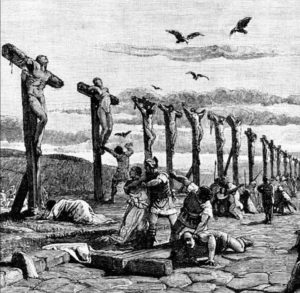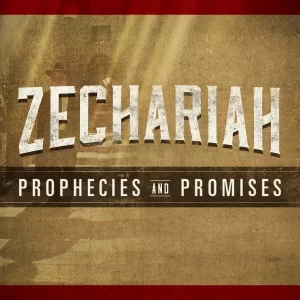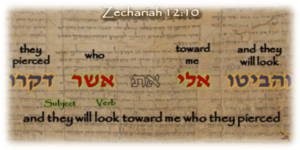Jeremiah – (Don’t Kill) the Messenger
Jeremiah was tasked by God to deliver bad news to kings and the people of Jerusalem at a time when it was not uncommon to kill the messenger if the news was not welcome.[1] It didn’t matter that sprinkled in were reassuring prophecies of good news about the coming Messiah and the regathering in Jerusalem of the defeated, broken nation of the Hebrews.
First, while Josiah was king of Judah, Jeremiah’s prophecy foretold Jerusalem would meet the judgement of total destruction – captives, many killed and treasures lost – because the Hebrew people willfully and repeatedly broke the Covenant they agreed to uphold when God gave it to them at Mt. Sinai.[2] Death plots, even by his own family, were orchestrated to kill Jeremiah.[3]
Passhur, chief of security for the priests, had Jeremiah flogged and put in stocks near the Temple.[4] The next day Jeremiah was released and he forewarned Passhur of the manner of his death, that of his family and friends; specifically, “the king of Babylon” would strike them with terror.[5]
Continuing their defiance and evil ways, such as sex with pagan gods and sacrificing to them their own children, drew the wrath of God setting the scene for the curse of Jeconiah (aka Jehoiachin).[6] God sent a judgement message through Jeremiah to both Jeconiah and his father King Jehoiakim, son of Josiah. For Jehoaikim, it was a death sentence and for Jechoniah, it would be like he was childless – his children would not prosper and none would sit on the throne of David.[7]
Just five verses later, Jeremiah makes clear that in-spite-of God’s judgement, David’s royal lineage would not end.[8] God explicitly promised another king would be raised up from the Branch of David:
Jer 23:5 “”Behold, the days are coming,” declares the LORD, “When I will raise up for David a righteous Branch; And He will reign as king and act wisely And do justice and righteousness in the land.”(NASB)
Nebuchadnezzar’s army attacked Jerusalem fulfilling the judgement prophecy wreaking havoc and destruction on Jerusalem while taking prime captives.[9] One of those captives with special skills and pedigree was indeed King Jeconiah as well as and another future high-profile Biblical figure – Daniel.[10]
Over the next 10 years Nebuchadnezzar’s puppet King Zedekiah, brother of Jeconiah, had learned nothing from the judgment of his father and brother continuing to ignore and offend both King Nebuchadnezzar and God.[11] Having had enough, Nebuchadnezzar took action against Jerusalem once again.

Meanwhile, Irijah, captain of the Guards in Jerusalem, accused Jeremiah of being a traitor and then had him arrested, tried, flogged and thrown into a dungeon.[12] Jeremiah’s nemesis, Pashhur, along with three others approached Zedekiah advising the King that the prophet should be killed because his prophecies were demoralizing the troops.[13] The King allowed them to do as they wanted whereupon Jeremiah was lowered into an old cistern deep with mud and left to starve to death.[14]
Ebed Melech, an Ethiopian official at the palace, heard of Jeremiah’s plight. While King Zedekiah was conducting royal business at the Benjamin Gate away from the strict protocols of the palace, Ebed took the opportunity to inform the King of Jeremiah’s situation.
Quietly King Zedekiah instructed Ebed how to secretly rescue the prophet from the cistern. Jeremiah was moved to an outdoor prison yard and given a scarce daily ration of bread. Later, God rewarded Ebed by sparing him from Nebuchadnezzar’s destruction.[15]
Puppet Zedekiah came to realize the truthfulness of Jeremiah’s prophecies when Nebuchadnezzar again besieged Jerusalem. The King secretly questioned the prophet seeking his guidance, but it was too late.[16] Zedekiah was given a choice – surrender to the Babylonians and live, or fight and die.[17]
During his confinement God sent another message to Jeremiah to address worries that God had rejected Israel and Judah saying the throne of David would never end. Jeremiah foretold that the nations would one day be regathered and restored, then issued a second Branch of David prophecy:
Jer. 33:14-15, 17 “‘The days are coming,’ declares the LORD, ‘when I will fulfil the gracious promise I made to the house of Israel and to the house of Judah. In those days and at that time I will make a righteous Branch sprout from David’s line; he will do what is just and right in the land… For thus says the LORD, ‘David shall never lack a man to sit on the throne of the house of Israel…” (NASB)
A hundred years earlier, Isaiah identified the Branch and prophesied about “My Servant” who would sprout out of dry ground.[18] A century after Jeremiah’s two Branch prophecies, the prophet Zechariah identified “My Servant” as “the Branch,” twice prophesying the Branch would come to rebuild the Temple and rule from his throne:
Zech 3:8 “‘Listen, O high priest Joshua and your associates seated before you, who are men symbolic of things to come: I am going to bring my servant, the Branch.’”(NIV)
Zech 6:12-13 “Tell him this is what the LORD Almighty says: ‘Here is the man whose name is the Branch, and he will branch out from his place and build the temple of the LORD. It is he who will build the temple of the LORD, and he will be clothed with majesty and will sit and rule on his throne. And he will be a priest on his throne. And there will be harmony between the two.’”(NIV)
Renowned Jewish sage Rabbi Maimonides validated the identity of “the Branch.” The Rabbi cited Zechariah 6:12, Isaiah 52:15 and 53:3 as prophecies that the Messiah is “My Servant” who would be called “the Branch.”[19]
Emphasized were the trustworthiness of Jeremiah’s prophecies of God’s promise to Israel and Judah as well as His promises to Abraham, Isaac, Jacob and David. It was not just a promise with a limited guarantee or a warranty – God said it was unconditionally ironclad using an analogy of astronomy:
Jer. 33:20-21 “”Thus says the LORD, ‘If you can break My covenant for the day and My covenant for the night, so that day and night will not be at their appointed time, then My covenant may also be broken with David My servant so that he will not have a son to reign on his throne, and with the Levitical priests, My ministers.” (NASB)
Jer. 33:25-261 “”Thus says the LORD, ‘If My covenant for day and night stand not, and the fixed patterns of heaven and earth I have not established, then I would reject the descendants of Jacob and David My servant, not taking from his descendants rulers over the descendants of Abraham, Isaac and Jacob. But I will restore their fortunes and will have mercy on them.’” (NASB)
Jeremiah’s reputation as a prophet had become known to the Babylonian King. Remaining imprisoned in the court yard during the siege, Jeremiah was rescued by the command of none other than King Nebuchadnezzar!
Orders by Nebuchadnezzar to his top commander, Nebuzaradan, was to find the prophet during their attack of Jerusalem, protect him and do whatever he asked. Jeremiah was released in Gedaliah, given food and a gift.[20] On the other hand, Zedekiah tried to escape Nebuchadnezzar’s army, was captured and tortured.
The Book of Jeremiah issued numerous detailed prophecies, many that came true in a single lifetime. Are the future Branch promises of God issued through Jeremiah reliable prophecies about the Messiah and the regathering of Judah and Israel back in Jerusalem?
Updated July 18, 2023.
![]()
This work is licensed under a Creative Commons Attribution-NonCommercial-NoDerivatives 4.0 International License.
REFERENCES:
[1] Jeremiah 1; 37:17.
[2] Jeremiah 3:6; chapters 1-15.
[3] Jeremiah 11-12.
[4]Jeremiah 17-18, 20, 26.
[5] Jeremiah 20:4-6. “Jehoiakim.” Jewish Encyclopedia. 2011. <http://jewishencyclopedia.com/articles/8562-jehoiakim> “Jehoiachin.” Jewish Encyclopedia. 2011. <http://jewishencyclopedia.com/articles/8543-jeconiah>
[6] CR II Chronicles 36:11-14; Jeremiah 3:2; 7:22-26, 31.
[7] CR Jeremiah 36:30-32.
[8] Irenaeus of Lyons. Against Heresies. Philip Schaf, ed. Ante-Nicene Fathers. Volume I. 2005. Early Christina Writings. Book III, Chapter XXI.9-10, Chapter XXII.1-4. <http://www.earlychristianwritings.com/text/irenaeus-book3.html>
[9] Jeremiah 24; 29; Daniel 1:4.
[10] Daniel 1.
[11] Chronicles 36:12; Jeremiah 27:20; 32:2; 37:1-2. Bakon, Shimon. “Zedekiah: The Last King of Judah.” Jewish Bible Quarterly. Vol. 36, No. 2, 2008. <http://jbq.jewishbible.org/assets/Uploads/362/362_zedekiah.pdf>
[12] Jeremiah 37:13-16; 38:6, 13, 24-28.
[13] Jeremiah 38:1-6.
[14] Jeremiah 14:3; 38:5-6, 9. “Jeremiah in the Cistern.” HeartofaReadyHeart. Image. 2009. <http://heartofareadywriter.blogspot.com/2009/10/august-27th-prophet-persecuted.html>
[15] Jeremiah 37:21; 39:16-18.
[16] Jeremiah 37:17; 38:14. CR 37:3-10.
[17] Jeremiah 38:17.
[18] Isaiah 11:1, 53:2.
[19] Neubauer, Adolf, and Driver, Samuel Rolles. The Fifty-third Chapter of Isaiah According to the Jewish Interpreters. 1877. Moses Maimonides. “Letter to the South (Yemen).” pp 374-375. <http://books.google.com/books?id=YxdbAAAAQAAJ&pg=PP1#v=onepage&q=advent&f=false>
[20] Jeremiah 39; 40; 43:6.



 Translations of the Hebrew text word daqar as either “pierced” or “thrust him through” is the difference between the two Jewish and most Christian Bible translations.
Translations of the Hebrew text word daqar as either “pierced” or “thrust him through” is the difference between the two Jewish and most Christian Bible translations.